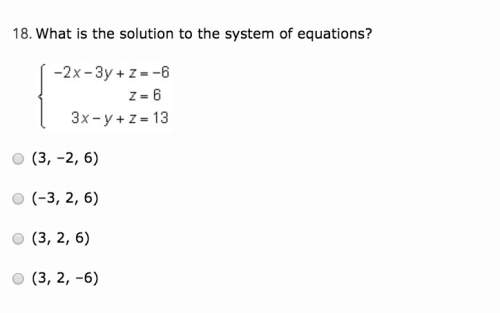
Mathematics, 10.03.2020 19:09 mercymain1014
For each of the premise-conclusion pairs below, give a valid step-by-step argument (proof) along with the name of the inference rule used in each step:
(a) Premise: {¬p ∨ q → r, s ∨ ¬q, ¬t, p → t, ¬p ∧ r → ¬s}, conclusion: ¬q.
(b) Premise: {¬p → r ^ ¬s, t → s, u → ¬p, ¬w, u v w}, conclusion: ¬t v w.

Answers: 3


Another question on Mathematics

Mathematics, 21.06.2019 18:00
What are the equivalent ratios for 24/2= /3= /5.5=108/ = /15
Answers: 1

Mathematics, 21.06.2019 18:00
What is the relationship between all triangles that can be drawn given the same three angles
Answers: 2

Mathematics, 21.06.2019 18:30
Deshawn uses 3/4 of a box of rice to cook dinner the portion he uses weighs 12 ounces right and solve an equation to find the weight of the full box of rice
Answers: 1

Mathematics, 21.06.2019 20:30
If g^-1(x) is the inverse of g (x) which statement must be true
Answers: 3
You know the right answer?
For each of the premise-conclusion pairs below, give a valid step-by-step argument (proof) along wit...
Questions

Physics, 07.07.2019 07:30


Physics, 07.07.2019 07:30


Mathematics, 07.07.2019 07:30

Mathematics, 07.07.2019 07:30

Mathematics, 07.07.2019 07:30





Biology, 07.07.2019 07:30





Mathematics, 07.07.2019 07:30






